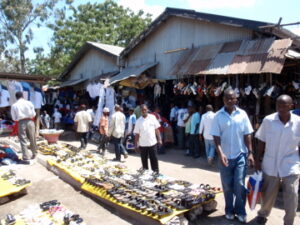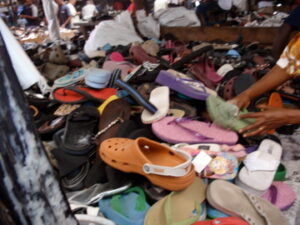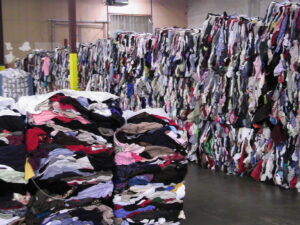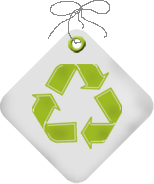Global Responsibility
Recycle Shoes and Clothing – How We BenefitWhy Repurpose Shoes and Clothing?
Keeping up demands that we shop more than ever, leading to seriously overstuffed wardrobes. We can’t accommodate the excess so we throw it away – and average of seventy pounds per person annually.
 Forget the garbage. While a few communities have textile recycling programs, about 85% of this waste goes to landfills where it occupies about 5% of landfill space and the amount is growing. Landfill space is expensive and hard to find.
Forget the garbage. While a few communities have textile recycling programs, about 85% of this waste goes to landfills where it occupies about 5% of landfill space and the amount is growing. Landfill space is expensive and hard to find.
Besides the clothing can be used again in one form or another. Discarding would be a waste, not just of the material itself, but of the water and energy that went into the manufacturing. Most textiles can be repurposed and the benefit of taking the time to recycle those items far outweighs the small inconvenience of putting such items aside for recycling. Fresh water is a dwindling resource and energy use contributes to global warming, the biggest environmental problem of our times.
Instead let’s get the full benefit of these resources by using the fabrics to death. (Source Material: nrdc.org/thisgreenlife)
Many items in your home can be repurposed. For instance, old shoes, wallets, belts, purses, backpacks, hard toys, stuffed animals, caps and hats can be repurposed as well as old clothes.
Benefits of Repurposing Shoes and Clothing
Almost 100% of household textiles and clothing can be repurposed, regardless of quality or condition. Repurposing clothing and textiles benefits charities, reduces solid waste, and provides employment to Texans.
When Americans repurpose their unwanted clothing and textiles, it provides three main benefits: funds charitable programs, reduces solid waste, and provides economic stimulus and employment here and abroad. Specific benefits include:
- reduces solid waste in landfills
- demonstrates sustainability and environmentalism, and reduces carbon footprint
- creates economic development around the world
- converts waste products into value-added products
- provides employment to semi-skilled or marginally employable U.S. workers
While Americans are familiar with recycling of plastics, aluminum and other packaging, they may be less likely to understand the value of recycling all unwanted clothing and household textiles.
Consumers should not dispose of unwanted shoes or clothing in the garbage because almost 100% of it can be repurposed. Yet consumers in the U.S. place almost half of their unwanted textiles and clothing in the trash, accounting for almost 5% of the solid waste stream.
- Avoid throwing out any textiles since even those that might be considered rags may have some use and value.
- Textiles, even biodegradable natural fibers, do not easily degrade under landfill conditions due to lack of sunlight and oxygen.
- Incineration contributes to air pollution.
(Source Material: Oklahoma Cooperative Extension Service)
Textile Recycling By The Numbers
As a textile recycler, all the issues being addressed concerning recycling, recyclability, re-purposing, source reduction, etc.: have relevance to our industry. It is hoped through education and the cooperation of government agencies that the consuming public will recognize the need and importance of recycling discarded apparel into secondhand clothing. Acceptance of these definitions as a part of “recycling” will help encourage the maximum recycling of textile waste and thus minimize the amount of material that goes into the waste stream.
Statistics collected by the Council for Textile Recycling indicate that on a national basis this industry recycles approximately 10 lbs. per capita or 1,250,000 tons of post-consumer textile waste annually. However, these 10 lbs. represent less than 25% of the total post-consumer textiles waste that is generated. According to the EPA’s 2009 study of the United States Generation of Solid Waste, textiles account for some 12.8 million tons of the solid waste stream. Per the same study, rubber, leather, and textiles make up 8.3% of municipal solid waste.
 One of our goals here at World Wear Project is to increase the amount of textile waste that can be recovered and at the same time develop new uses and markets for products derived from post-consumer textile waste. Additionally, we are forging partnerships with non-profits and community organizations because sustainable income is vital to a modern charity, and recycling as an income stream helps and affects so many people, while fulfilling social responsibilities.
One of our goals here at World Wear Project is to increase the amount of textile waste that can be recovered and at the same time develop new uses and markets for products derived from post-consumer textile waste. Additionally, we are forging partnerships with non-profits and community organizations because sustainable income is vital to a modern charity, and recycling as an income stream helps and affects so many people, while fulfilling social responsibilities.
- since 2009, only 16.2% of textiles were recovered and kept out of landfills
- about 61% of the clothes recovered for second-hand use are exported to foreign countries
- we are able to recycle 93% of the waste we process without producing any new hazardous waste or harmful by-products
- textile recyclers export 61% of their products, thus reducing the U.S. trade deficit
- World Wear Project and its affiliates recycled 48 million pounds of shoes and clothing in 2020
(Source Material: Council for Textile Recycling and SMART)
We All Have An Impact
There is good news to be found in all these numbers. Almost half, 48%, of the post-consumer textile waste is typically sold to developing countries. It is through our industry’s efforts that the worlds poorest are clothed. Second-hand clothing is all that is affordable to an individual earning $200 annually. Industry members are capable of delivering a pair pants in clean, damage-free condition to the east coast of Africa for a $0.34 a pair and sweaters to Pakistan for $0.12 each — less than the cost of mailing a letter. These prices not only include the garment, but the cost of transportation as well.
 We are able to do this because of our investment in equipment and facilities to process efficiently and economically the huge volume of material that is handled. Approximately 20% of the material processed becomes wiping and polishing cloths.
We are able to do this because of our investment in equipment and facilities to process efficiently and economically the huge volume of material that is handled. Approximately 20% of the material processed becomes wiping and polishing cloths.
Our goal is to increase the amount of textile waste that can be recovered and at the same time develop new uses, products, and markets for products derived from pre-consumer and post-consumer textile waste. Our aims are identical with EPA’s “overriding goals … to encourage the trends toward (1) increased use of recycled materials in products and (2) the increased recovery of material for recycling.
Members of the textile recycling industry are currently working to double the amount of post-consumer material that is being recovered. The textile products recycled today are mostly or entirely recyclable, and in most cases are 100% recycled.

Global Responsibility
Recycling
Shoes
Clothing
Hats
Toys
Legal
Contact Us
World Wear Project, LLC
10777 Shady Trail
Dallas, Texas 75220
Phone: (214) 352-5551 Ext. 305
